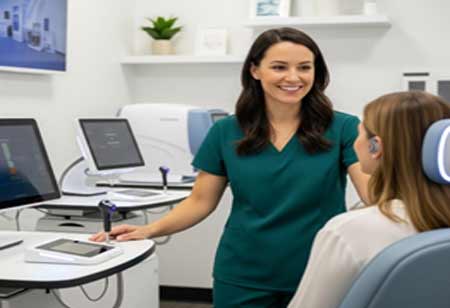Navigating the Changing Landscape of Audiology
When the importance of hearing health is communicated, the momentum for change grows stronger.

By
Medical Care Review | Friday, December 12, 2025
Stay on top of your health and well-being with exclusive feature stories on the top medical clinics and treatment centers, expert insights and the latest news delivered straight to your inbox. Subscribe today.
Fremont, CA: The audiology field is evolving rapidly, reshaping how hearing and balance care is delivered worldwide. Technological breakthroughs, changing patient needs, and shifts in healthcare systems influence this transformation. Audiology professionals are finding themselves at a crossroads, balancing the excitement of innovation with the practical challenges of day-to-day clinical practice.
How can audiologists keep pace with these changes? What strategies can ensure the profession continues to thrive while meeting patient expectations? Understanding these issues and opportunities is key to maintaining high-quality care and advancing the profession.
Technological Innovation and Its Impact on Practice
Technological progress has fundamentally changed the audiology landscape. From advanced diagnostic tools to the latest generation of hearing aids, new devices and software have elevated the accuracy, speed, and effectiveness of hearing assessments and treatment plans. Imagine a hearing aid that amplifies sound and connects wirelessly to smartphones, filters background noise intelligently, and even learns a user's preferences over time. These innovations greatly enhance patient satisfaction and compliance.
However, these advancements bring their own set of challenges. Keeping up with the rapid development of new technologies requires continuous education and training. Audiologists must be prepared to adapt their clinical workflows to incorporate these tools effectively while ensuring patients receive comprehensive explanations about how these technologies work and how they can benefit from them.
How can audiologists stay ahead of the curve without feeling overwhelmed? Embracing ongoing professional development and fostering a learning culture within practices can make this transition smoother. Furthermore, integrating technology with a personalized approach ensures that each patient's unique needs and preferences remain central to care.
Addressing Workforce Well-being and Professional Sustainability
Alongside technological change, the audiology workforce faces challenges. Professionals often experience heavy caseloads, administrative pressures, and the emotional weight of helping patients with hearing loss or balance issues. Burnout and professional isolation are real concerns impacting clinicians' well-being and the quality of care. Creating supportive environments that encourage collaboration and open communication can alleviate these pressures.
How can organizations foster resilience and job satisfaction among audiology teams? Prioritizing work-life balance, offering mental health resources, and promoting teamwork are critical components of a sustainable professional environment.
Moreover, mentorship and peer support networks provide valuable opportunities for sharing best practices and coping strategies. Ensuring audiologists feel connected and valued benefits individual practitioners and strengthens the profession's collective capacity to deliver exceptional patient care.
Navigating Policy and Reimbursement Barriers
One of the persistent challenges in audiology is healthcare policies and reimbursement structures. Restrictions on insurance coverage and the complexity of reimbursement processes can severely limit patient access to essential audiology services. These barriers can impede timely diagnosis and treatment for individuals, which, in turn, adversely affects public health outcomes.
Advocacy plays a critical role in addressing these systemic issues. Engaging with policymakers and participating in professional organizations can significantly influence legislative changes that promote expanded coverage and simplify reimbursement mechanisms. Audiology professionals must consider effective strategies for advocating for their patients and their profession. By remaining informed about regulatory developments and collaborating with various stakeholders, they can enhance the collective voice of the field.







